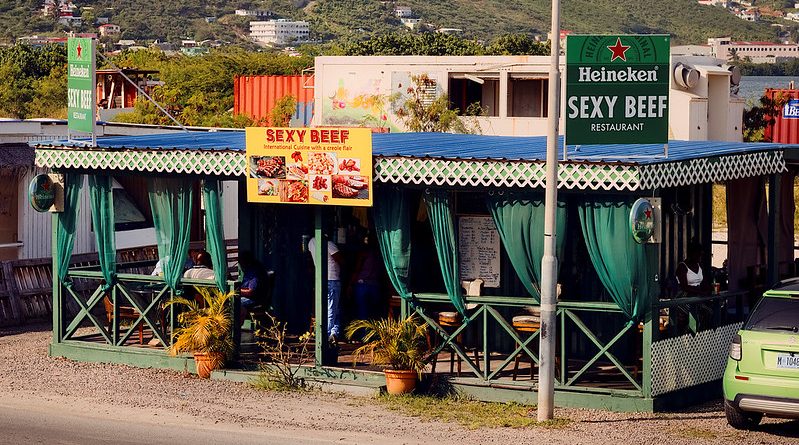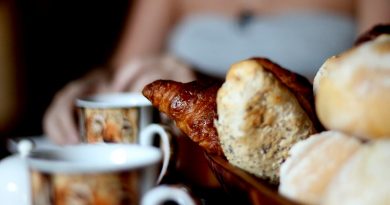Caribbean Features: Creole Cuisine
Food Facts
Where: Caribbean and parts of Central America
Origins: Spanish and French roots combined with foodstuffs from East India, England, Holland and slaves from Africa
Staples: Seafood, pork, rice and peas, plantains, chilli, spices and bread with many regional variations
Top dishes: Asopao (chicken stew) and goat colombo (indian curry)
The culinary inheritance of the Caribbean is integrally linked to its immigrant past. Its cuisine is known as Creole, derived from the Spanish word crillo (meaning native to an area). Originally it referred specifically to the dishes that mixed local ingredients with Spanish or French cooking techniques. These have changed drastically over time and now barely resemble their original incarnations – so the term has followed suit and now incorporates a diverse range of influences fused together in a single dish.
Origins and History
Tucking into almost any dish on offer here gives you a taste of its complicated history. When Christopher Columbus and the Spanish arrived in 1492, on a mission to find spices in the Far East, they encountered the Amerindian Caribs whose diet was based on fish, exotic meats like turtle, iguana, guinea pig and alligator and local produce like cassava, pineapples and cashews. The newcomers were intrigued by a food preservation method in which they cooked the food on abrabacot (a wooden framework over a pit of coals). The Spanish adopted the technique and named it barbacoa, where the word barbecue comes from.
The Spanish imported a lot of their own foodstuffs, most notably livestock (and especially pigs to Puerto Rico), as was well as oranges, bananas, rice and probably coconuts. The arrival of the English, French and Dutch to the islands brought the onset of large-scale cultivation on plantations where sugarcane became the primary crop. By 1630 the industry was really flying as sugar became more and more popular with confectioners in Europe.
The indigenous population had been decimated by disease so the colonists looked to West Africa for slaves to import onto their plantations and a new influence was thrown into the cooking pot of the Caribbean. On poor harvest years, slaves grew their own produce from over the Atlantic likeackee (now the Jamaican national dish) and okra. The seemingly unpalatable off-cuts of meat like pigs’ trotters or tail – which are now mainstays of the region’s finest restaurants – originate in the slave kitchens of centuries ago.
The abolition of slavery in the nineteenth century brought with it the need for new supplies of labour on the plantations. Thus from the 1830s onwards Chinese and East Indians migrated to the islands as indentured servants bringing with them their own traditions and ingredients. The role of rice in a meal was greatly strengthened, spices became more important and the Indian roti (a flatbread wrapped around a spicy stew of meat, potatoes and vegetables) developed a big following especially on Trinidad, home to their biggest community.
Contemporary Creole Cuisine
These days, the original fusion feasts dished up in the Caribbean are joined by fast food and Mexican fare, especially in the particularly Americanised island of Puerto Rico. That’s not to say that traditional foods are dying out; if the region’s learnt one thing it’s that new influences are a recipe for success. Staples of Creole cooking remain seafood, meat (especially pork), rice and peas, vegetables (especially plantains), chilli, spices and bread but styles and favourites tend to vary from island to island.
Guadeloupe
Guadeloupe is quite possibly the best place to try Creole cuisine; it’s still part of France and the influence of this culinary heavy weight makes it the gastronomic mecca of the Caribbean. Breakfast is a bigger deal here than on most islands, there’s a boulangerie (bakers) on almost every street that sell pastries filled with tropical fruits like watermelon, guava andwatermelon. Make a visit to L’ Arbe a Pain Obertan (address below) – it’s the only bakery on the island that uses a traditional wood-burning stove and you can really taste the difference.
Popular fusion dishes include Boudin Creole, a spicy blood sausage, Goat Colombo, based on an Indian curry, La Creole, a fish stew similar to Frenc bouillabaisse and accras, an African salt-cod fritter. For the very best in home cooking, go to a table d’hote, a restaurant that you phone in advance to order a specially prepared meal. We recommend La Maison Blanche (address below) run by Madame Viviane Madacombe, president of the local ‘Creole Cooks Association’. Another great place to try a one-pot stew lunch or other Creole favourites is Le Karacoli (address below) on the beach at Deshaies and run by a brother and sister team.
Puerto Rico
Despite the rampant Americanisation of the island, there’s still more than enough traditional food on offer in Puerto Rico. Street stalls all over San Juan tout specialities like alapurrias (dumplings stuffed with beef or seafood), chicharron (pork rinds fried in lard) and mavi (cider from ironwood tree bark). The covered market of San Turce is a good place to pick up a Caribbean-wide favourite, plantain. According to a local saying there are a hundred different ways of cooking the plant and whether mashed, boiled, roasted or whatever, it’s always delicious. The national dish is asopao, a rich tomato stew with chicken and rice that’s similar to Spanish paella.
On a Sunday join the locals for feasting and live music at the famous lechoneras outside San Juan in Guavate where outdoor restaurants specialise in whole roasted pig over an open fire. Basted in a sour orange juice, the pork exudes a unique flavour and comes with side dishes of yams, cassava, sweet potato, dasheen and plantain.
Trinidad
The history of Trinidad is similar to that of the other English islands but its culinary culture has an easterly skew because of its high proportion of East Indians. Today, 40% of its inhabitants are Indian, another 40% are African and the remaining 20% are made up of various ethnicities including Chinese and Syrian. The result is three very different cuisines with not much cross over between them. Roti is probably the national dish, a flatbread stuffed with spiced meats, chickpea or vegetable curry and best washed down with beer. Another enduring Indian contribution isdoubles, spicy channa (chickpea) covered with spicy cucumber sauce between two pieces ofbara (discs of fried bread). An African influenced favourite is callalloo, a thick green soup comprised of okra, onions, peppers and dasheen plant leaves.
St Kitts
The small island of St Kitts was known as the Mother Colony during English rule and only gained independence 20 years ago. These days many colonial buildings have been converted into swish restaurants.
The Native Indians called St Kitts laimigua, meaning ‘fertile land’. A trip to the local market inBasseterre on Saturday morning is a walk through tropical abundance. At the harbour opposite local fisherman pitch up their boats to sell their latest catch. For a tasty Friday night barbecue drop in on Peter’s Fish and Grill Night where he serves up delicacies like lobster, snapper and conch. For upmarket surroundings go to The Fisherman’s Wharf restaurant in the Ocean Terrace Hotel where seafood comes with a buffet of side dishes.
More Information
L’Arbre a Pain Obertan
1 Rue de la Republique
97116 Pointe Noire
Guadeloupe
The only bakery on Guadelupe that uses a traditional wood-burning stove. If you drop by for a visit, be sure to ask if you can pop in the back to see the bakers at work.
La Maison Blanche
Route de Calvaire-Chapelle
97122 Baie-Mahault
Guadeloupe
Tel: 0590 26 54 02
One of the best table d’hote run by Madame Viviane Madacombe who is president of the local ‘Creole Cooks Association’. The surroundings are beautiful and the food is both affordable and delicious.
Le Karacoli
Grand Anse
97126 Deshaies
Tel: 0590 28 41 17
Email: lekaracoli *at* wanadoo.fr
A great place to try a one-pot stew lunch or other Creole favourites on the beach at Deshaies and run by a brother and sister team. They’re only open for lunch but try and draw it out so you can catch the sunset from this spot – it’s wonderful!
Campis Kitchen
For some great ideas on how to cook plantain and other local dishes visit the website of our local chef, Miguel Campis.
main image: A lechoneras outside San Juan in Guavate, Puerto Rico where outdoor restaurants specialise in whole roasted pig over an open fire




